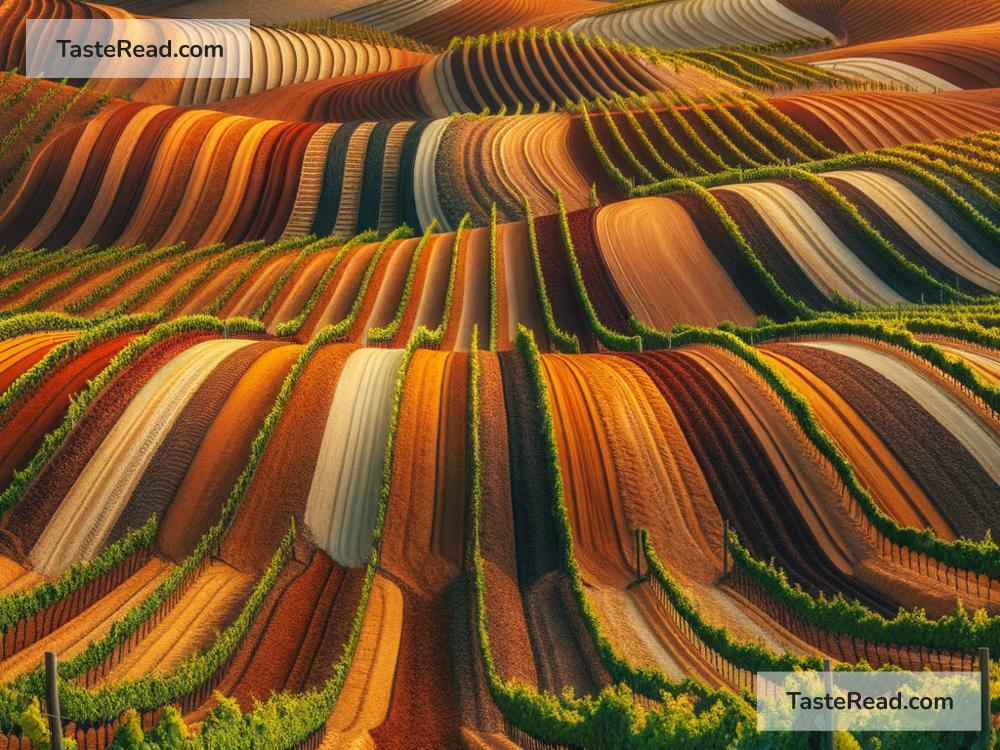How Soil Composition Impacts the Flavor of Wine Grapes
When you sip a glass of wine, you may notice hints of fruit, floral aromas, or even a trace of minerals. But have you ever wondered why wine tastes so different depending on where it’s made? A big reason lies below the surface—literally. The soil in which wine grapes are grown plays a crucial role in shaping their flavor. Soil composition isn’t just about dirt; it’s a complex mixture of minerals, organic matter, moisture, and air that affects grape growth, health, and ultimately, the wine’s taste.
In this blog post, we’ll explore how soil composition impacts wine grapes, focusing on the essential connections between soil, grape quality, and wine flavor.
What is Soil Composition?
Soil composition refers to the materials that make up the soil, including:
- Minerals: Soil contains elements like clay, sand, silt, and crushed rock.
- Organic Matter: Bits of decomposed plants and animals that enrich the soil.
- Nutrients: Minerals such as nitrogen, potassium, calcium, and magnesium that help plants thrive.
- Water and Air: Soil retains water and provides oxygen to grapevine roots.
Different types of soil create different environments for grapevines, influencing how grapes grow, ripen, and form their unique tastes.
How Soil Impacts Grape Quality
Wine grapes rely heavily on soil for their nutrients, water, and support. Different soils drain water at different rates, retain heat differently, and influence the vine’s root system. Let’s break this down step-by-step:
-
Drainage: Some soils, like sandy soils, drain water quickly. Others, like clay, hold water for longer periods. Poor drainage can stress grapevines, while well-drained soils help vines access water without becoming waterlogged, creating better-balanced grapes.
-
Mineral Content: The minerals in the soil, such as calcium and magnesium, directly impact the grapevine’s ability to absorb nutrients. These minerals can subtly influence the flavor profile of the grapes.
-
Temperature Regulation: Soil regulates the temperature of the vines. For example, lighter-colored soils reflect sunlight and keep the vine cooler, while darker soils retain heat. The temperature maintenance impacts how well the grapes ripen, affecting sweetness and acidity.
-
Stress Encourages Flavor: Grapevines produce better fruit when slightly stressed. Some soils provide just enough challenge for the vine to focus energy on nurturing its grapes rather than excessive leaf growth. This often leads to smaller, more flavorful grapes.
Terroir: The Connection Between Soil and Flavor
Wine experts often talk about a term called “terroir,” which refers to the environment in which grapes are grown. Soil is a key part of terroir because it impacts water retention, temperature, and plant nutrition—all of which shape the flavor and character of the grapes.
For example:
– Volcanic Soil: Found in some wine regions, volcanic soil is rich in minerals like iron and basalt, which can add a hint of minerality or smokiness to the wine.
– Limestone Soil: Limestone is great at retaining water and promoting drainage. Grapes grown in limestone-rich soils often have bright acidity and mineral undertones in their flavor.
– Clay Soil: Clay retains water well but can make grapes ripen more slowly. Wines from clay soils may have bold, concentrated flavors.
– Sandy Soil: Sandy soil drains quickly and warms easily, encouraging grapes to ripen faster. This often results in fruit-forward wines.
Each soil type interacts differently with grapevines, creating unique characteristics in the wine. This is why two wines made from the same grape variety can taste totally different depending on where the grapes were grown.
Famous Wine Regions and Their Soil
Many of the most famous wine regions in the world are known for their unique soil types, which help produce distinct wine flavors. Here’s a quick look at a few examples:
- Bordeaux, France: Bordeaux is famous for its gravelly soils, which drain water efficiently and give wines elegant, balanced flavors.
- Tuscany, Italy: Home to Chianti wines, Tuscany’s clay and limestone soils create wines with rich textures and vibrant acidity.
- Napa Valley, California: Napa Valley has diverse soils, including volcanic and alluvial soils, contributing to the bold, fruit-forward flavors of its wines.
- Rhine Valley, Germany: The slate soils in Germany’s Rhine Valley retain heat, allowing the region’s Riesling grapes to develop their signature crispness and minerality.
Why Does Soil Matter?
Soil doesn’t just affect the grapes; it affects wine lovers, too! When farmers choose a vineyard site, soil is one of the most crucial factors they consider. By understanding the soil, winemakers can better predict how their grapes will grow, what challenges they might face, and how the wine will ultimately taste.
For wine drinkers, the impact of soil on wine flavor offers endless opportunities to explore. You can taste a Pinot Noir from a sandy soil vineyard in California and then try one from clay soil in Burgundy, France. The noticeable difference is what makes wine tasting so exciting.
Conclusion
The soil beneath the vines is like a secret ingredient in wine production. It affects everything from grape health to ripeness, sugar levels, and acidity, shaping the wine’s taste in unique ways. Whether you’re a casual wine drinker or a budding connoisseur, understanding soil composition offers a deeper appreciation for the magic of wine.
So, the next time you pour a glass, think of the soil—because every sip carries a little piece of the earth that grew those grapes. Cheers!


